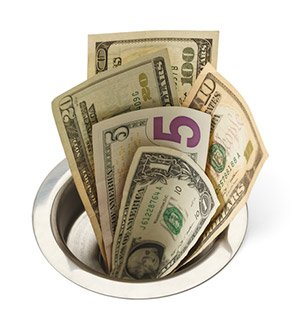The geopolitical and market bogeymen of the moment - Kim Jong Un, Vladimir Putin, tariffs, cyber warfare - are riding tall in the saddle.
That's sparked something of a "flight to safety," which ignited a bit of an uptick in demand for Treasuries this month. But that wasn't enough to send yields lower.
I'll tell you why - it's the same thing I told my Sure Money readers back on March 3, and nothing has really changed, at least, not for the better.
In fact, things have gotten somewhat worse. That's why I'm here to talk to you about it today.
[mmpazkzone name="in-story" network="9794" site="307044" id="137008" type="4"]
Debt Sells... but Who's Buying?
Part of the problem is that dealers are on the wrong foot; they're long on Treasuries and aren't in position to absorb an increase in spending. This situation just so happens to be the mirror image of what happened back in 2008: Dealers were massively short on Treasuries, and so their positions were squeezed to death in a worldwide Treasury-buying panic that they exacerbated.
That's significant, but it's only part of the picture. Foreign players have also cut back.
"Trouble Is Brewing": According to Bloomberg's latest report, America could be heading for an economic disaster that would rival the Great Recession. To see why we believe some of the richest players in the world are preparing for a market collapse, click here.
As they converted dollars from their sales of Treasuries back to euros and other currencies, their central banks recycled those dollars back to the United States.

And despite that cash being recycled back into the Treasury market, yields still rose. Other investors were rotating out of bonds and into stocks.
Except for the early February crash, declining effective investment demand has yet to be felt in stock prices.
Mark my words: As the U.S. Federal Reserve continues to drain funds from the system, thereby weakening demand, we will see more downdrafts in stocks.
Watching the Treasury market, the 3% level on the 10-year yield is obviously critical: Breaching that level is technical confirmation that a bond bear market is underway, and psychologically, it throws cold water on investors and traders.
10-year Treasuries are yielding 2.845% as of this writing, with no sign that they'll go lower anytime soon.
Still, it may take a while to clear that 3% level, but once it's broken, it's broken - and the pressure on stocks should grow.
More Treasuries, More Pressure on Stocks, and More Short Opportunities
As the Fed shrinks its balance sheet at an accelerating pace over the next year, it will cause both an increase in Treasury supply and a reduction in the cash available to absorb that supply.
Since bonds and stocks compete for available investment funds, it's not good news for stocks, either.
Why?
Well, there's been enough cash and speculative leverage around to support a rally in one market but not the other.
Under the circumstances, any rally in bonds - like the one that's sputtering out right now - would be a selling opportunity. And now's a good time to look for fat, overvalued stocks to short when the stock market kicks over.
And finally, like I said earlier this week, I think it's a smart move to edge your way toward a 60% to 70% cash position, too.
You Must Act Now: America is headed for an economic disaster bigger than anything since the Great Depression. If you lost out when the markets crashed in 2008, then you are going to want to see this special presentation. Because if you don't act soon, the effects on your financial future could be more severe than anything you have ever experienced. Don't wait - You can see all the details right here.
Follow Money Morning on Twitter @moneymorning, Facebook, and LinkedIn.
About the Author
Financial Analyst, 50-year charting expert, finance + real estate pro, and market analyst; published and edited the Wall Street Examiner since 2000.



